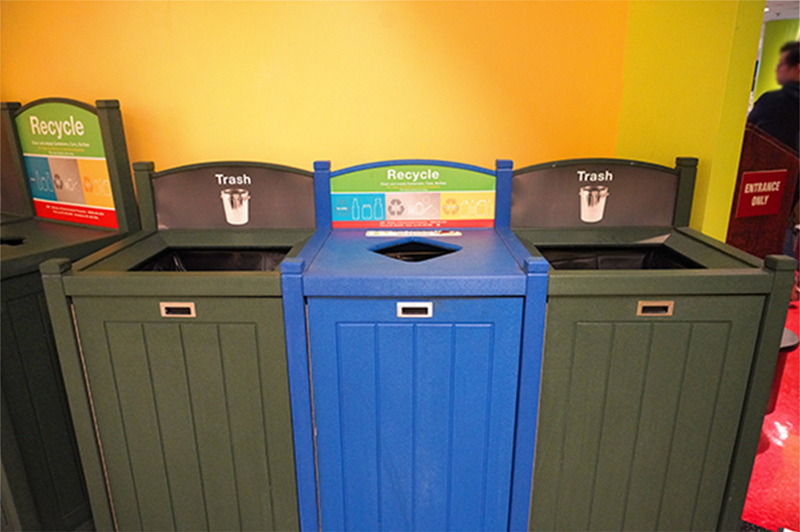Almost 600 Tons of Waste Recycled in 2024

On the 55th anniversary of Earth Day, which falls on April 22 this year, it's a good time to reflect on the impact the Clinical Center has in reducing waste.
The hospital has participated in a recycling program for almost twenty years, and now includes paper, cans, glass, certain plastics, toner cartridges, compost, animal bedding, scrap metal and pipette tip racks (pipette tips are used to transfer precise volumes of liquid in a laboratory setting and the racks hold and organize the tips).
Accordingly, the Clinical Center has recycled almost 600 tons of materials in the 2024 calendar year. All waste that is not recycled or composted is incinerated at a waste-to-energy facility, meaning little to no trash goes to the landfill from NIH.
Recycling at the NIH is administered by the Division of Environmental Protection which is a part of the Office of Research Facilities.
ORF estimates that each person at NIH disposes of 2.4 pounds of trash per day while recycling 1.7 pounds of materials.
In addition to operational waste, the NIH generates an estimated 120,000 pounds of food scraps every year. Food scraps are any unconsumed food that is discarded and can include grains, eggshells, coffee grounds, peels and expired or spoiled food items.
The B1 cafeteria in Building 10 recycles food scraps, redirecting almost 11 tons of food waste into the composting program last year. The food scraps and contaminant free animal bedding go through a process called anaerobic digestion, where organic materials are broken down naturally by microorganisms. Because it is a fermentation process, there is no burning and there are no emissions.
The composted food scraps can have a positive impact by producing biogas, soil improvers (materials that improve the fertility and structure of soil), fertilizers and reducing greenhouse gases.
With more NIH staff returning to the office full time, reminding people of their impact can go a long way.
With a little effort, hospital staff can make sure we place the appropriate waste into recycling bins instead of the trash can.
What Can I Do With…
Food Scraps
Food waste compost bins are available near the B1 cafeteria exits.
Toner Cartridges
These can be placed in "Toner/Ink Jet Cartridge" bins. Printer and copier toner cartridges are transported to Virginia where they are sorted, boxed and distributed for remanufacturing. For every usable cartridge that is recycled, a $1 donation is made to an NIH charity: the Children's Inn at NIH, Special Love for Children with Cancer - Camp Fantastic or the Friends of the Clinical Center.
Pipette Tip Racks
These can be placed in "Pipette" recycling bins. Recycled pipettes are sent to a processor to be melted into black pellets which are made into flowerpots.
Animal Bedding
Uncontaminated animal bedding made of pine shavings, corn cobs, hardwood, wood pulp from plants, bedding bags and animal feed is also composted. The food and animal bedding is shipped off-site and goes through a composting process where microbes decompose and generate heat which eliminates pathogens. The final product is nutrient rich and is used in farming, landscaping and gardening.
Regular Paper Documents
These can be placed in recycling bins marked for "paper". Recycling bins are available throughout the hospital. Cardboard should be flattened and placed next to paper recycling bins.
Confidential Documents
Any confidential documents, items that have personally identifiable information (PII) or other information that should remain secure, should be disposed of in grey shred boxes to protect confidentiality and maintain privacy.
- Donovan Kuehn

